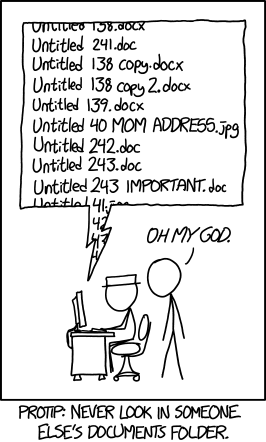The Importance of File Naming

What is a file naming convention?
A file naming convention (FNC) is a framework for naming your files in a way that describes what they contain and how they relate to other files.
It is ESSENTIAL to establish a FNC before you begin collecting files or data in order to prevent a backlog of unorganized content that will lead to misplaced or lost data.
File naming conventions help you stay organized and makes it easier to identify your files. By consistently organizing your files, you will be able to quickly find what you need. And in a shared or collaborative group file-sharing setting, it will help others more easily navigate your work.
Things to Consider
In addition to creating a file naming convention, also create a folder hierarchy as well. Think about how you or others will look for and access files. Do you think about them by type, location, study, or something else?
Consider writing a data management plan as this will help you manage your data and files long term, answering questions such as:
-
What’s the purpose of the research?
-
What is the data? How and in what format will the data be collected? Is it numerical data, image data, text sequences, or modeling data?
-
How much data will be generated for this research?
-
Are you using data that someone else produced? If so, where is it from?
-
Who is responsible for managing the data?
The Harvard Library Research Data Management Program can get you started with a data management plan and walk you through a data lifecycle.
Cartoon image source: https://xkcd.com/1459/.

